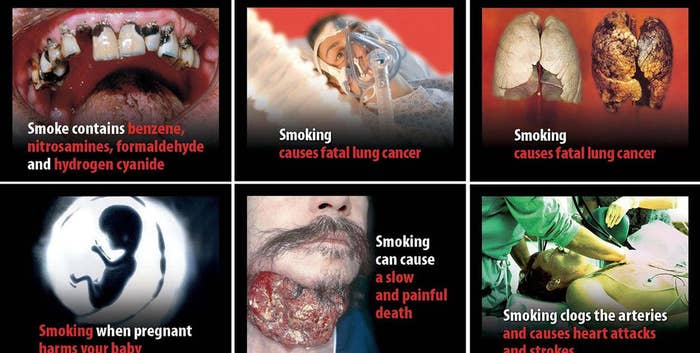If you've been on the internet in the last 24 hours, you'll have seen the images. A dead boy, little more than a toddler, washed ashore on a beach; in a second picture, he is being carried away from the waterline by a policeman.

The question is: Do shocking images like these change people's minds? If someone was previously against accepting more refugees from Syria, might seeing Aylan's body make them reconsider?
Didn't go into journalism to put dead kids on front pages. Considered all arguments against carefully. Feel strongly this crisis warrants it
Amol Rajan, the editor of The Independent, argues that they may. Roy Greenslade, the Guardian's media editor, agrees: "It may be naive to suggest that the image of his body on a beach will change minds, but I like to think that it will."
There is some evidence that shocking images change minds in at least one other context. This year, the BMJ published a review of research into the use of graphic warning images on cigarette packets.

The idea that images are more effective than words at grabbing attention makes psychological sense, Dr Dean Burnett, a behavioural psychologist, tells BuzzFeed.
"Visual images tend to carry a bit more clout, because the brain itself is a very visual organ," he says. "There are estimates that about 50 to 60% of the brain is connected to visual processing, so putting an actual image out there instead of describing it is more evocative, because that's how our information processing systems tend to work. They're much faster and more visceral impact when it's a visual image rather than a description."
That may be doubly true, he says, with images of dead bodies.
"Humans have this instinctive revulsion of seeing an actual corpse, due to evolved mechanisms," he says. "Seeing a corpse means danger and infection and death so we've learned to avoid it. There may be a specific mechanism in play when it comes to viewing a dead body."
There are some plausible psychological reasons why people are resistant to graphic images, says Burnett. The first is cognitive dissonance.
"Things are more powerful if you feel like you have some way to respond, some way to deal with it," he says. "So if people say you can donate to this fund, you can lobby your MP, that makes people feel like they can do something." A feeling of powerlessness leads you to become more entrenched: "Your brain says: I'm a nice person, this is a bad thing, I'm not doing anything about it. That's not consistent, so how do we explain it to ourselves?" And because it can't change behaviour, it changes its thinking.
A way of avoiding making people feel powerless might be to provide a link to the UNHCR Syrian crisis appeal, or to Médecins Sans Frontières as well as just the image.
Another is habituation. It is impossible to maintain shock and emotional response from the same stimulus, over and over again.
"With something this potent it will take a while," says Burnett, "but if it pops up on everyone's Facebook feed every three minutes, then you're going to think 'Oh god, that again,' rather than being shocked every time."
And a third is group identity. If you feel like you are being attacked, you will be more likely to ignore the image.
"If you're sharing this image to condemn people," says Burnett, "if you're saying 'This has happened, you let it happen, you are a terrible person,' then you end up with a group mentality developing.
"Our group identity is very much part of who we are. If someone attacks you, the obvious solution isn't to go 'Oh, yes, you're right.' It's a threat, you're under attack, the fight-or-flight response kicks in. It won't change people's minds, it'll just make things worse."
Of course, there are reasons for sharing these images other than simply changing minds. They can also galvanise a response from people who are already sympathetic but unengaged. Jon Dean, a sociology lecturer, told BuzzFeed:
@TomChivers I have interviewed fundraisers who understand probs of 'poverty porn' but these campaign pics raise much more than fluffier ones
@TomChivers One homelessness charity said this year they got £100k more than usual bcos the image they used was so stark and upsetting
This seems to be backed up by some research. Another study in Visual Communication Quarterly suggests that sad images in charity advertising are more likely to elicit feelings of sympathy and intentions to donate than happier images.
It should also be said there are other reasons people might consider not sharing the images, such as the dignity of the dead child himself and the possibility of traumatising those who see it.

